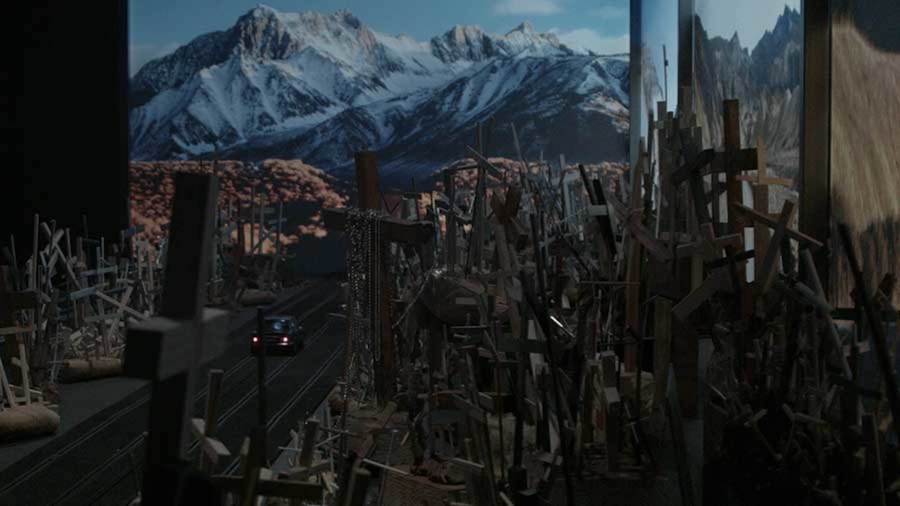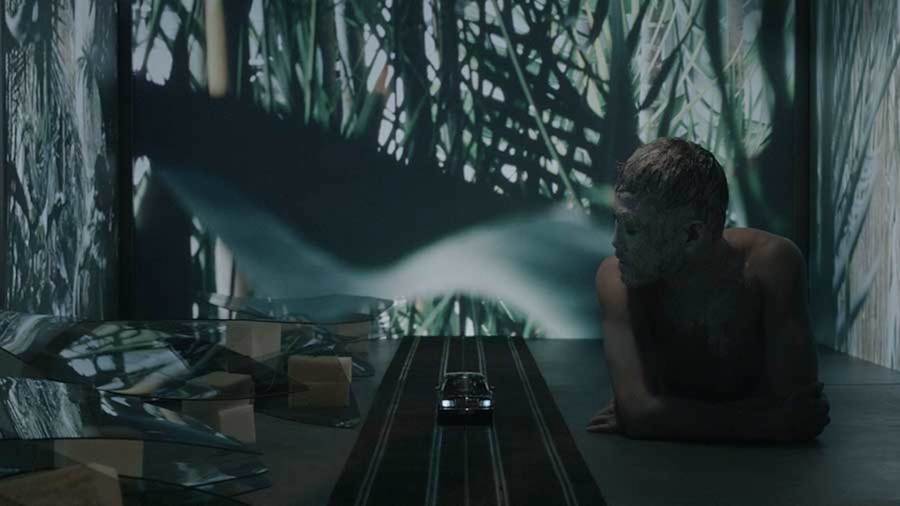
Co-direttore e art director del Sonar Festival di Barcellona, Sergio Caballero ha dimostrato una sorta di iperattività artistica spaziando dalla musica elettronica alle arti figurative passando proprio per il linguaggio cinematografico. A fare da fil rouge è un’estetica surrealista che nelle pellicole si fa strada tra bizzarri personaggi e una narrativa astratta.
Il suo ultimo progetto e primo dramma “Je te tiens”, nato come campagna visual della scorsa edizione del festival, è tra i film d’artista in programma a Lo Schermo dell’arte (13 – 17 novembre, Firenze).
Un cortometraggio intenso sia a livello di contenuti visivi che di dialoghi, un vero e proprio omaggio al genere del road movie, un viaggio senza apparente destinazione attraverso uno scenario fiabesco e a tratti grottesco. A bordo di una macchina madre e figlia affrontano temi esistenziali quali la vita e la morte, in un dialogo all’interno del quale il publico viene come catapultato fin dall’inizio e davanti al quale non può che essere spettatore. “Je te tiens” è stato il punto di partenza per indagare l’approccio cinematografico di Caballero e le contaminazioni tra cinema e arte contemporanea.
Guendalina Piselli: “Je te tiens” is your fourth film but the first narrative one. How did your approach to cinema changed in these years, since your first film “Finisterrae” (2011)?
Sergio Caballero: All my films are narrative. Sometimes it is more evident other times it is more abstract. In general, I am not interested in the narrative aspect of cinema because not all the film have to tell a history. What is interesting for me is the possibility of cinema to show other worlds.
GP. Your “Ancha es Castilla/N’importe quoi” (2014) was an homage to the horror film sub-genre exorcism, “Je te tiens” is a road movie even thought it doesn’t seem to have a destination. But the way you tell a story reminds me more of a music composition rather than a screenplay….
SC. My approach to a film is the same I use for a musical composition: firstly I choose a sound palette that is the one that takes me to the final composition. To realize a film I start from the images themself. This is the first time I felt like doing a drama. Anyway, I think “Je te tiens” has a final destination: that destiny is the death.

GP. I read somewhere that this was the first time you worked with a professional actress (Angela Molina, ndr). How did it work? And how did you manage to combine a non-professional actress with a professional one?
SC. It is the first time I work with a professional actress such as Ángela Molina. For this project, she did not act, because there was no written script, but she lived it. Even if Ángela Molina is a professional actress I didn’t have the feeling that I was working with an actrees during the shooting.
GP. In this film a mother and a daughter are travelling in a car through mysterious places while surrounded by unusual characters and kinetic sculptures. A scenario that could be part of a contemporary art installation and that looks like a magical forest taken from a fairy tale…
SC. The scenography of “Je te tiens” was showed at the Sonar Festival last edition in Barcelona. Some of my visual works has been showed in museum of contemporary art, for exemple Ancha es Castilla/ N’Importe Quoi was projected Smithsonian Hirshhorn Museum at Washington. Actually, when I realize a new piece I dind’t think of it just as a film, but more like a visual proposal which could be show in different formats
GP. Filming the structure of the scenography from the outside looks like a way to reveal the fiction and the tricks behind cinema…
SC. With “Je te tiens” on the one hand, I wanted to pay homage to Hollywood black cinema, which used rear projection screens like chromas. And on the other hand I wanted to create seven or eight different worlds or landscapes all within a structure 6 meters long by 2 meters wide. When we started to assemble the film I was clear that I wanted to show all the artifice of the structure; of the screens, of the different sizes of the car, of the loops, etc. It is very curious that the spectator, seeing all the artifice, accept the game and dive into the different worlds we have created.
GP. In all your films the characters seem to act extremely weird, pursuing something which remains completely meaningless for the audience. In this film the two actresses speak covering their mouth with one of their hands and a strange human figure seems to follow them after manipulating the scenario from the outside. Is this the ultimate MacGuffin, as Hitchcock called it?
SC. I am more interested in the process rather than the final result. As I said before, the classic narrative doesn’t really interest me. At the end the narrative in my film is just an excuse to let the audience an element to hold on with, though many times those are false ways. Currently I have just edited the visual piece I made for the Sonar 2017 campaign, regardless of any type of text, graphics or dialogue, so that removing all these elements creates a completely new piece in which the viewer creates his own narrative. In fact I am very interested in the paths that cinema opens up without dialogue and the relationship that is created with the spectator.










